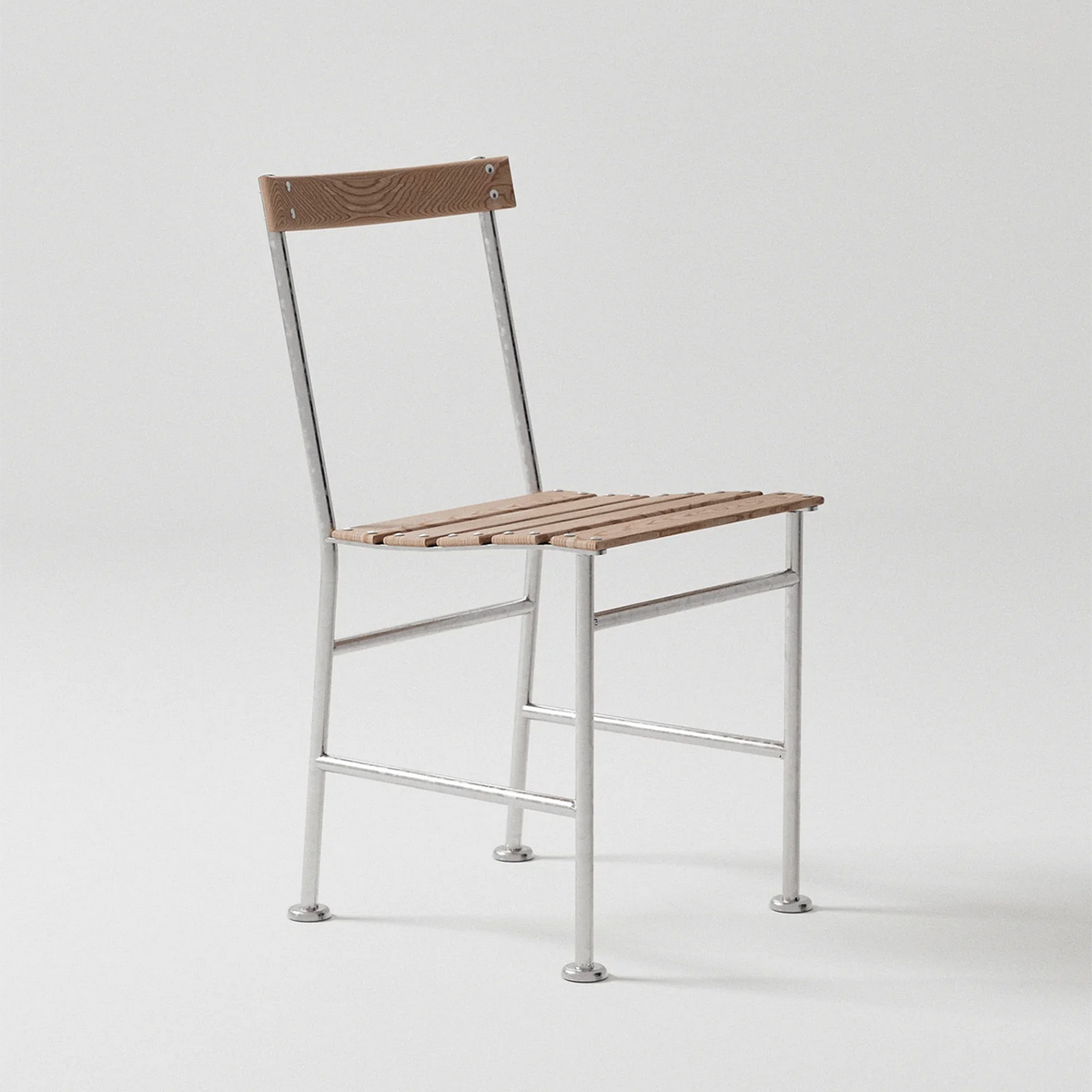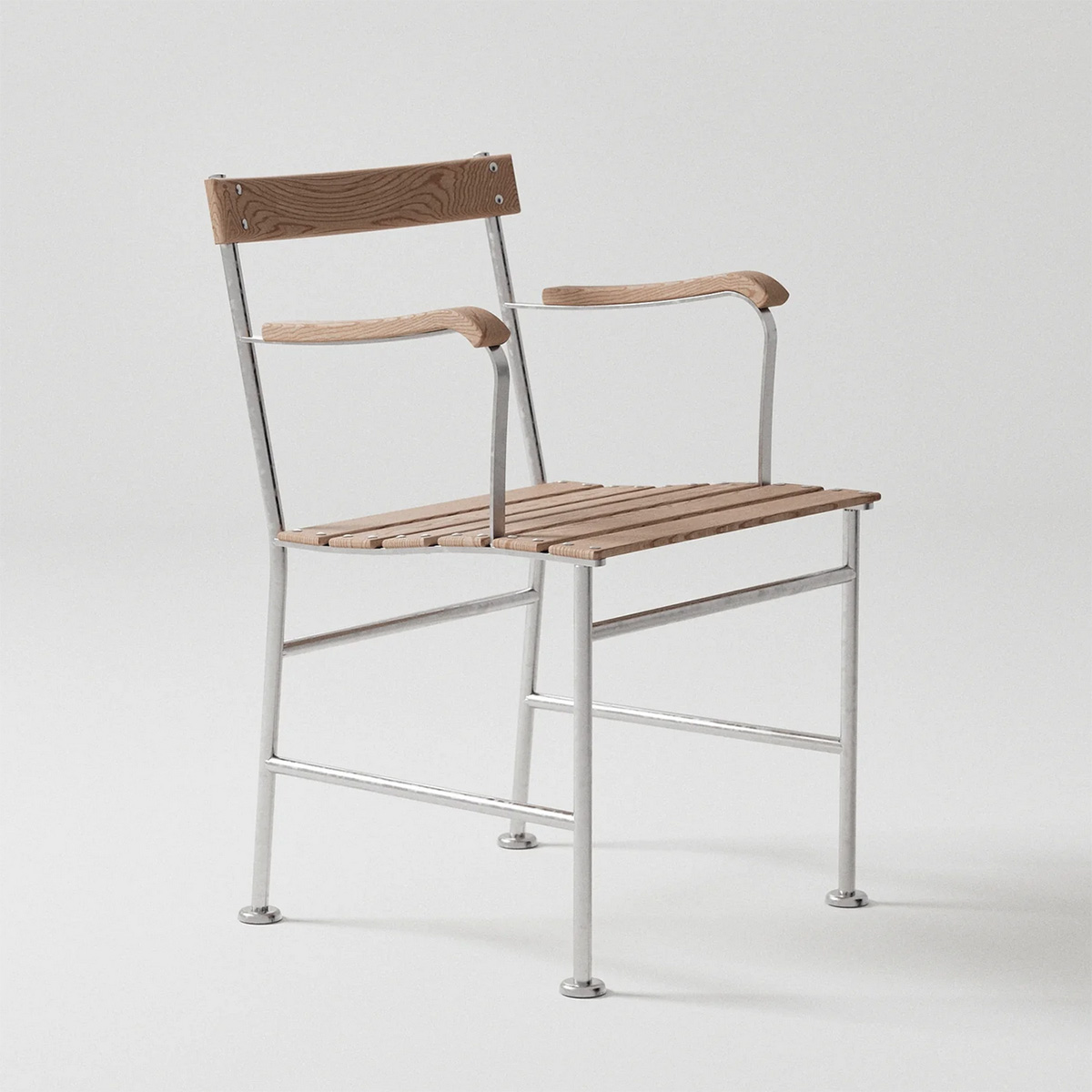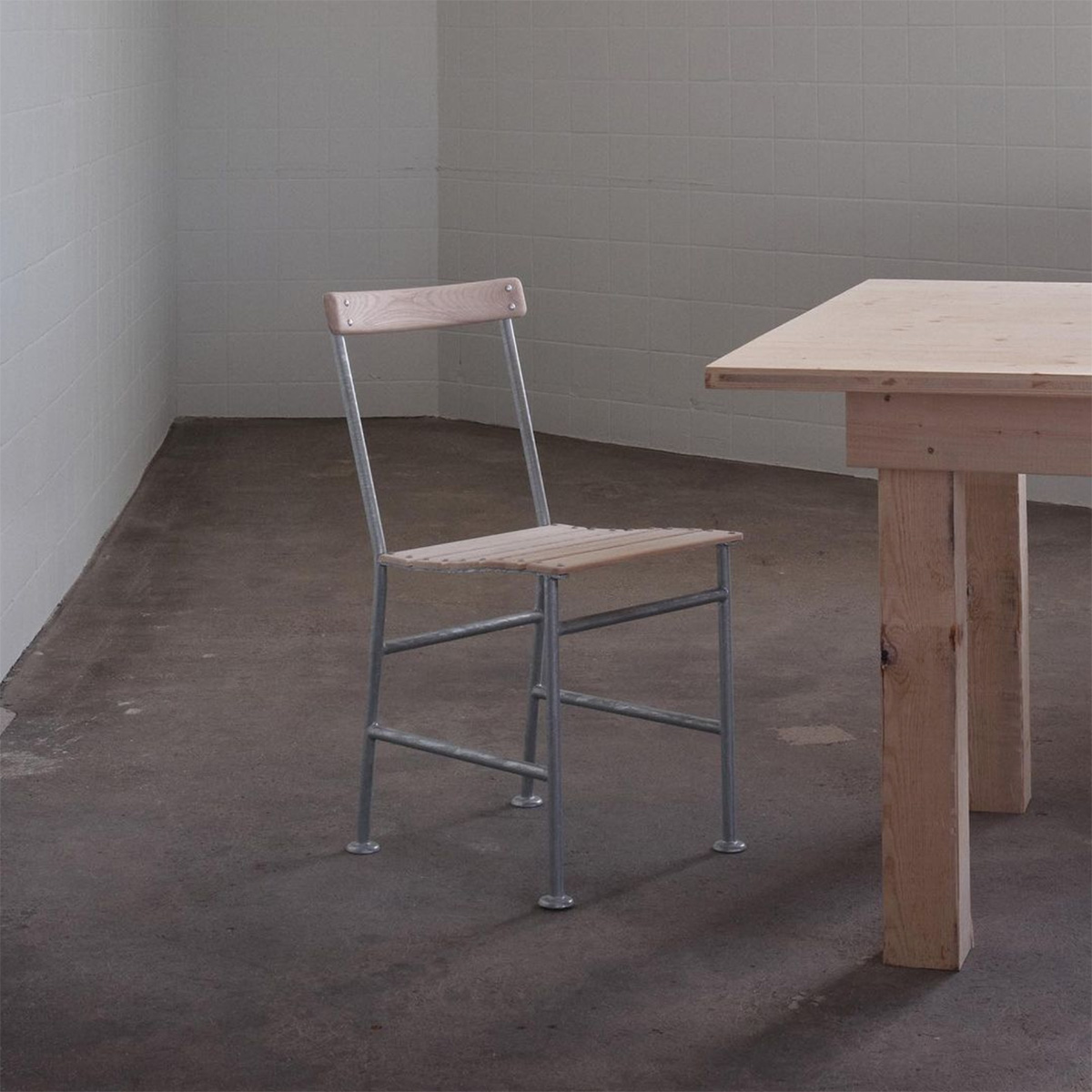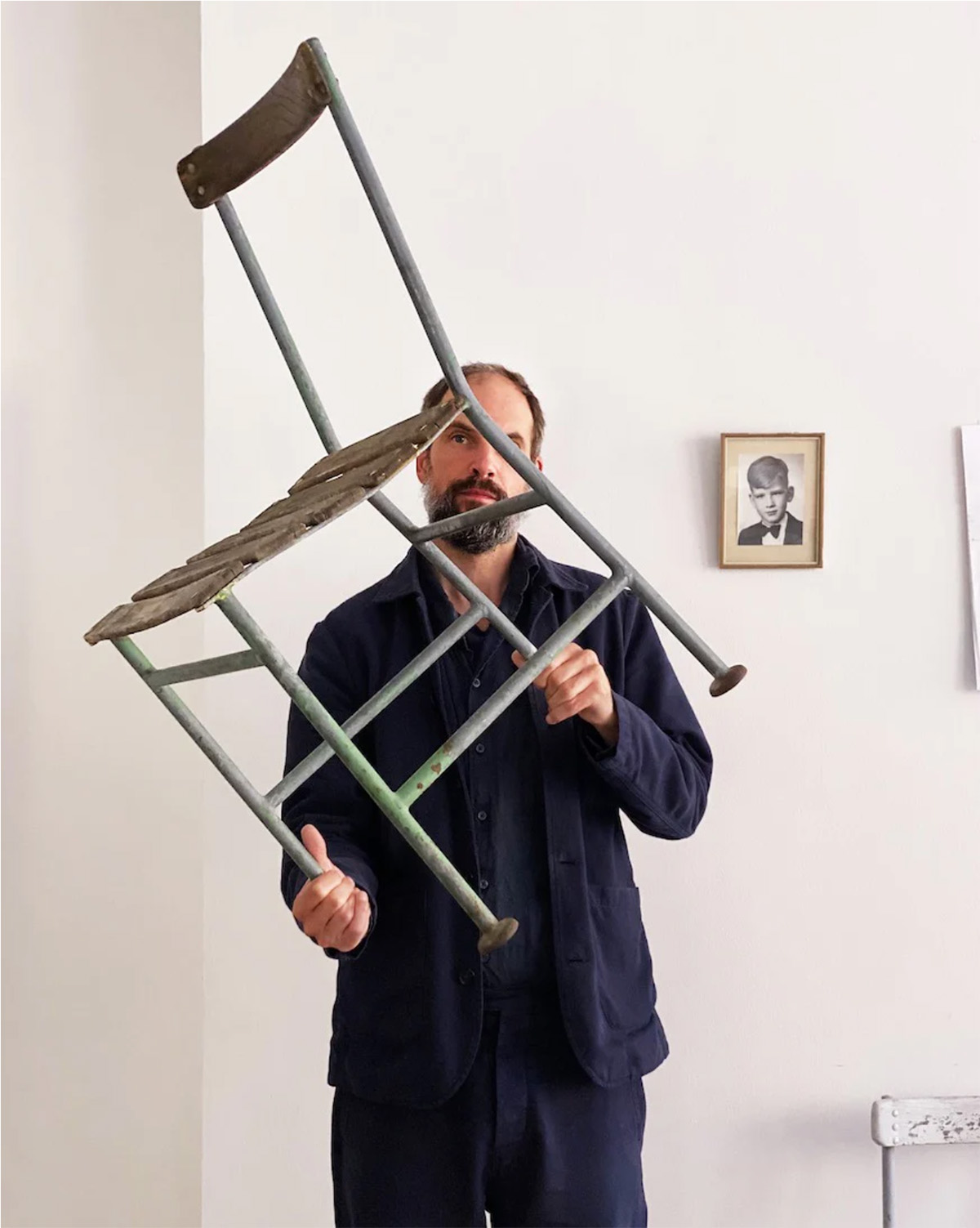Stockholm Chair
This chair was made for the 1930 Stockholm Exhibition, and it is very likely that Gunnar Asplund, chief architect of the exhibition, was involved in its creation. Many of the exhibition’s events took place outdoors, and special attention was paid to the design of garden furniture, flowerpots, and lamp posts. The chair’s characteristic wide foot, which prevent it from sinking into the gravel, could also be found on the elevated flower beds that divided the central plaza.
Over three thousand copies of the chair were made for the exhibition. Two different firms were responsible for the production, Borensbergs mekaniska verkstad and Iwan B. Giertz. Even though Asplund oversaw the design of everything, from buildings and graphics to furniture, the provenance of the chairs has never been proved beyond doubt.
The chairs that were used at the exhibition, without armrests or with armrests and deep seat, were made of treated steel and varnished ash. Tallum will provide a version with galvanized steel frame, solid oak battens, and aluminium rivets. We plan for a sales start in the autumn of 2023.


Gunnar Asplund
Gunnar Asplund (1885–1940) was a leading figure in Scandinavian architecture in the first half of the 20th century. Born in Stockholm, Asplund attended the School of Architecture at the Royal Institute of Technology in 1905. Decisive for his further career was the long journey to Italy, which he undertook in 1914. The breakthrough came in the following year when he, together with Sigurd Lewerentz, won the first prize in the International Architecture Competition for the design of a new cemetery in Stockholm (Woodland Cemetery). In the Woodland Chapel (1920), the Cemetery’s first chapel, Asplund blended vernacular imagery and classical motifs.
With Villa Snellman (1918), and Lister County Courthouse (1921), two highly refined works, Asplund had once and for all distanced himself from the National Romanticism of his predecessors. The Skandia Cinema (1923), constructed inside a building from the 1850s, clearly demonstrates his fascination with the architectural promenade and the play with inside-outside concepts. This fascination also left an impression on the Stockholm City Library (1928), by many considered as Asplund’s masterpiece from the Neoclassical period.
In 1930, Asplund was the chief architect of the Stockholm Exhibition, which marked the breakthrough of Modernism in Sweden. During the following years he developed his particular interpretation of modernism, embodied by Bredenberg Department Store (1935), National Bacteriological Laboratories (1937), and his own summer house, Stennäs (1937). Just before his premature death in 1940, Asplund completed two of his most important and personal works, the Law Courts Annex in Gothenburg (1937), and the Woodland Crematorium (1940).



 About Us
About Us